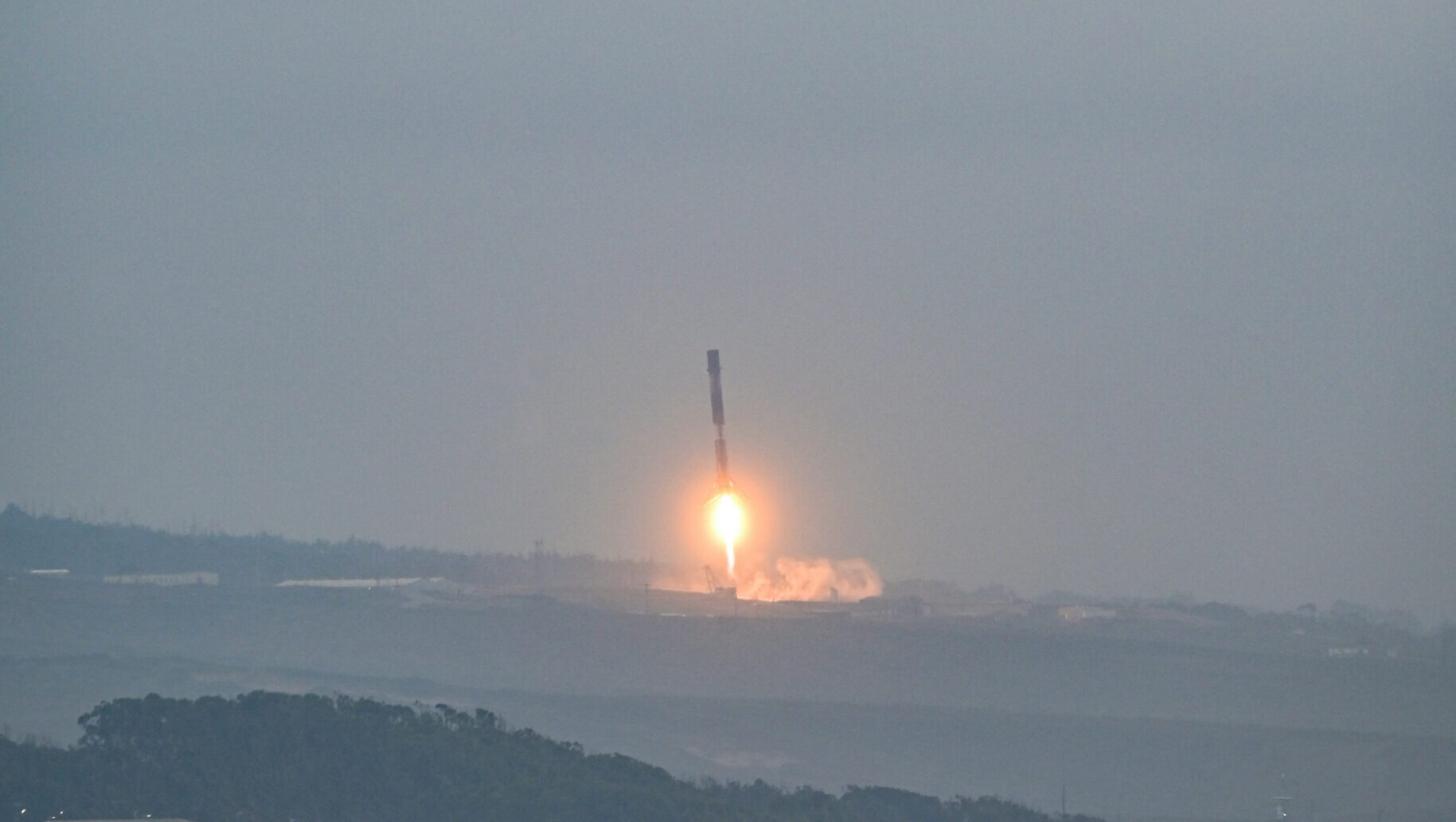
A SpaceX Falcon-9 rocket lifts off from Space Launch Complex 4E at Vandenberg Space Force Base, Calif., Sept. 2, 2023. This mission carried the Space Development Agency’s second round of Tranche 0 satellites for its Proliferated Warfighter Space Architecture. (U.S. Space Force photo by Airman 1st Class Ryan Quijas)
SATELLITE 2024 — The Space Development Agency’s planned constellations for data relay and missile warning/missile tracking will be operational and providing service to commanders on a region-by-region basis by the end of 2025, according to SDA Director Derek Tournear.
The agency’s current fleet of 28 satellites in low Earth orbit (LEO), called Tranche 0, is designed to demonstrate capabilities and work out the kinks for accomplishing both missions, but the next generation, called Tranche 1, will be capable for “real use,” he told the annual Satellite conference in Washington, D.C. today.
“Tranche 0 is a demonstration for people to get used to using the satellites and know that the capability exists. But what about [the] use of this, for real? That’s what Tranche 1 is all about. Tranche 1 is our official warfighting capability,” Tournear said.
“By the end of next year, we’ll have 126 Link 16 satellites that are operational on orbit. We’ll have 28 of our wide field-of-view missile tracking satellites operational, and we’ll have four of the medium [field-of-view satellites] … operational on orbit. That will make up our Tranche 1 operational system,” he added.

Derek Tournear, Space Development Agency director. (Air Force photo by Airman 1st Class Raisa Christie)
Link 16 is the standard data link used in radios owned by all five US military services, as well as all NATO allies. Basing Link 16 in space effectively allows beyond-line-of-sight communications around the globe in near-real-time. Thus, SDA considers it crucial in enabling its Transport Layer of low latency data relay satellites to serve as a key backbone for the Defense Department’s Joint All Domain Command and Control (JADC2) networking scheme to link all “sensors” to all “shooters.”
SDA has struggled to garner Federal Aviation Administration (FAA) approval to broadcast Link 16 from space over US territory, due to concerns about potential interference with radio systems used by aviators. But after getting a thumbs up for use outside US airspace from international regulators, the agency in November was able to successfully demonstrate the capability over the territory of an unnamed US ally. Tournear told Space News during an online interview earlier this month that he expects to resolve the FAA issue and begin broadcasting Link 16 over the US by the end of this year.
SDA’s planned missile warning/missile tracking satellites, collectively known as the Tracking Layer, are being optimized to keep tabs on rapidly maneuvering hypersonic missiles that can evade current systems built to follow the predictable trajectories of ballistic missiles. Wide field-of-view cameras cover a large region of space. Medium field-of-view cameras can see less area, but provide more precise tracking needed to help target missile defense interceptors.
Tournear noted today that in keeping with SDA’s two-year spiral development cycle, SDA already is “in acquisition” for the next iteration of the Transport and Tracking Layer constellations, known as Tranche 2. Once up and running, Tranche 2 will be able to connect users around the globe on a 24/7 basis.
“We’ll be going through the design phases this year,” he said. “So they’ll start to launch in 2026 and complete launch in 2027.”
The Space Force asked for $4.27 billion in fiscal year 2025 for SDA, representing a relatively small cut from the agency’s FY24 request of almost $4.7 billion — funding four launches as opposed to five included in last year’s budget.






















